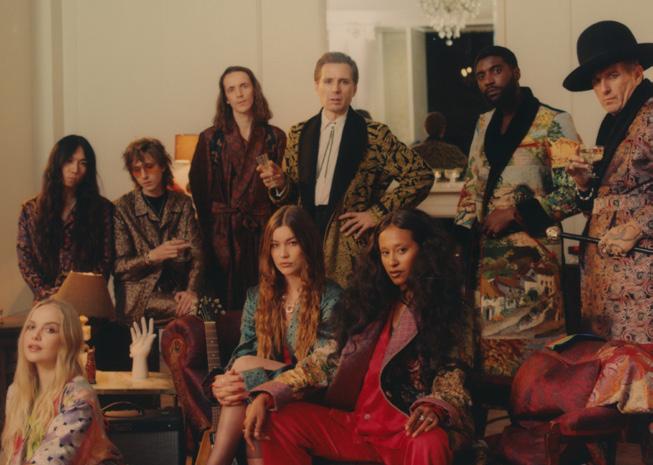
30 minute read
ALL hANS ON DecK
interview: Addie Kenogbon photos: Adrian Vitelleschi Cook
Launched by the late Daniel Hanson and his wife Julie Hanson in 1989, Nottingham luxury dressing gown and fine garment design and manufacturer brand, Daniel Hanson, has garnered an elite following for over three decades. Its premium fabrics and exquisite designs have made it a household name in Hollywood, amongst royalty and around the world. We catch up with Associate Julian Hanson and his mother, Managing Director Julie Hanson, to find out more about this special family-run business...

For over three decades, Daniel Hanson's iconic garments have made a name for themselves amongst royals, nobility and celebs, but what makes them so timeless?
Our garments are not made to be transient - trends fade and move on, but quality does not. We believe that our clothing should survive us, be handed down to the next generation, and refurbished and repaired rather than discarded. What we create is very simple and beautiful, a high-quality product - often designed specifically for the wearer – which is carefully thought about and more likely to reflect the home interior than yearly changing outdoor wardrobes. This is a point which narrates the permanence and timeless sensations of home and how we dress and behave there… It’s different to the outside world.
Daniel Hanson's exquisite garments have been worn by the likes of Elton John in John Lewis' Christmas advert, but can you mention any other famous names who've worn your pieces?


My favourites over the years might be the actresses Catherine Zeta-Jones (garments produced for the 1999 movie Entrapment) and Halle Berry. We also like it when there are musicians like Mick Fleetwood and Ozzy Osbourne - but those were orders from a few years ago. More recently, on the shoot of our DH22 campaign, we worked with Alex Kapranos (Franz Ferdinand) and produced a pair of complementing gowns for him. Regarding the direction of imagery we produce, I only want to work with artists who I know personally, not models. The atmosphere of working together is sincere, there is no acting within our photoshoots.
We have plenty of celebrity customers, and we do a lot of bespoke work for them, but it is always paid for. We abhor a celebrity culture that expects to be given things for free. As such, we do not involve ‘influencers’ in our business. If you see a celebrity wearing one of our garments it’s because we have forged a relationship with them. The design and manufacture of our products are how we and our amazing staff earn their living, and our self-worth is vested in being paid for what we do.
Can you tell us more about the design and manufacturing process?
Firstly, all our products are made-to-order, including our fabrics which we order very small runs of, from the world’s best fabric producers all around the world. We employ only naturally deriving textiles which generally come from animal and plant fibres - cashmere, silk, wool and linen. Exquisitely patterned, pure, woven silk jacquards are the statement pieces – each of us usually falls in love with a different new cloth upon its arrival.
A small team of just six create all our work - Chris, Jenny, Jayne, Nicholas, Rebecca and Steve. Each item is produced in-house at our premises on Nuthall Road. For a bespoke customer, their order would be individually cut to bespoke measurements, each step of the way consulting with them to guide and decide upon design decisions. These include pure silk lining colours, trim choices and, of course, personalised touches including embroideries and embellishments. Garments are finished and packed as the final quality control, often by one of the Hanson family.
The brand returned to Nottingham in 2004, but what is it about the city that makes it so special?
Nottingham is unpretentious and full of real people, plenty of whom practise creative and productive works quietly and without boast. Many of our staff have worked with us for over twenty years. We have wonderful, deep roots, and proper connections with individuals in this city which colours and brings to life our activities here, at work and at home. We are also close enough here to have strong links in London, which is key for us because a great deal of our customers are international.
What have been some key highlights of the Daniel Hanson journey so far?
There have been so many, starting from when Daniel met with the then Harrods nightwear buyer on a train in London and discussed his vision for “the world’s best luxury dressing gown”. In 1989, Harrods bought the debut collection, financed in part by Julie Hanson’s personal savings (the banks all laughed them away)!
The first 300 or so gowns produced were cut on the kitchen table at Cromwell Street. In 1992, the business expanded into ‘Radford Mill’ on Ilkeston Road and occupied a shop/showroom on Canning Circus close by. In 1997, Sir Elton John first purchased from Daniel Hanson. Then, in 2005, The Independent called Daniel Hanson “The Sistine Chapel Ceiling of Dressing Gown Luxury”.
Hundreds of Daniel Hanson outfits were made for the 47 Ronin film. Can you tell us more about that?
Daniel was contacted in 1998 by English costume designer Penny Rose, regarding some garments for Entrapment - she had found our gowns in Neiman Marcus in Los Angeles and ever since had stayed in close contact. Penny called upon Daniel’s expertise for several projects over the years, and enlisted Daniel’s help for a huge portion of the garments shown in the final film.
Looking back, I could feel his passion and energy for that project was enormous; I think he loved the pressure and all the deadlines. During that time, our small workforce operated in shifts to make sure all the pieces could be turned around quickly enough to be on set as they were needed. He designed around 265 individual pieces, some of which were replicated 12-30 times, so there were a lot of garments.
In addition to your limited-edition collections, you also do bespoke pieces. Can you tell us one of the most interesting bespoke pieces you've created?
A sizable portion of the business is now bespoke work directly designed with the customer. It’s personally connecting and very satisfying. One such piece was a gown made for Michael Jordan in the late nineties after one of the very many NBA wins. It was commissioned for him by one of the American department stores. It took around 5.5m of cloth to produce a single gown for him (the average yield is 3.5m).
We have plenty of celebrity customers, and we do a lot of bespoke work for them, but it is always paid for. We abhor a celebrity culture that expects to be given things for free
Can you tell us about any current or upcoming collections?
Nick [Hanson] has been working on a truly unique set of very special artisanal creations. They’re wonderful, oneof-a-kind pieces that are gallery worthy. We’re working on a release plan for them presently but it’s likely that September 2023 will see those out in the world. In the very near future, we’re excited to be working with Harrods’ women’s department again this season, on a new set of limited edition kimono, due in-store around spring, all being well. The cloths have just arrived to us for those styles, and we’re all very excited about the new designs we’re about to make.
What else does 2023 have in store for Daniel Hanson? New collections, a perfectly colourful spring summer collection of waxed cotton, one-of-a-kind matching paired pieces. A delightful new look book, silk jacquard kimono, a few cottaging jackets, maybe even something for the kids. Expect the unexpected, but no need to change the handwriting!
danielhanson.co.uk
t he ReeL De AL
For as long as film adaptations have existed, there’s always been someone in the corner talking about how the book was so much better. How the film didn’t tell the story accurately. How this is for people who couldn’t be bothered to read the real story. And while, yes, there have been a fair few film flops over the years, that doesn’t mean that cinematic versions are a bad thing. Nor does it mean that the screen version should have to stick to the novel's story totally faithfully - just look at Stephen King’s 1997 The Shining mini-series and you’ll see that it doesn’t always work.
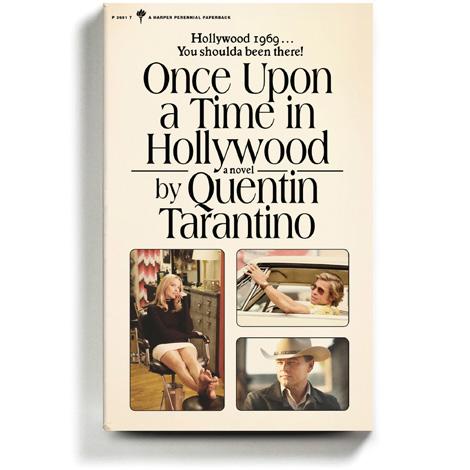
Rather, a great film or TV adaptation should lead us further into the story, instead of just recreating it. Because, after all, if you wanted the original story, you could have just read the text. And, though this might sound like sacrilege to some book lovers, that doesn’t necessarily mean that it has to keep to the plot entirely.
A great film or TV adaptation should lead us further into the story, instead of just recreating it
Just take Mike Flanagan’s 2018 horror series The Haunting of Hill House, for example, adapted from Shirley Jackson’s 1959 gothic horror novel of the same name. To the dismay of the book's original fanbase, Flanagan completely rewrote large sections of the story, diverting so far from the plot that it’s almost unrecognisable. Yet it’s still a great adaptation, because it captures the supernatural vs the psychological, it explores how space holds evil and the search for home. In short, it covers all the same themes as Jackson did - making it the perfect pairing to the book.
And that (in my humble opinion) is what a good adaptation should do. It should work with the book, rather than trying to replace it or copy it. It should lead to deeper reading, deeper watching, and a richer understanding of the story.
Thanks to the ‘double closet’, bisexual people are much less likely to come out than gay and lesbian people in the LGBTQIA+ community. They’re also at a higher risk of anxiety and depression in comparison to the larger population. That’s why bisexual activist Vaneet Mehta decided it was important to write his brand new book Bisexual Men Exist, the piece of nonfiction that aims to bring solidarity to the multisexual community. We catch up with him about the new book, alongside bisexual representation on screen…


This is a book that started with a hashtag. First tweeted in 2019, and then resurfacing in 2020, Vaneet Mehta posted to Twitter a very simple statement: #bisexualmenexist. And before long, the website was lit up with men sharing their stories of bisexuality, their feelings of erasure and their pride in their identity. “There were multifaceted reasons behind why I started this conversation,” Vaneet says. “It was partly in response to bigots, partly to celebrate bisexuality, and also to help those who, like me five or six years ago, couldn’t see themselves online. I wanted to create a narrative that showed we exist. So, the book was really an extension of all that.” A kind of guidebook, Bisexual Men Exist therefore has very similar aims as its hashtag predecessor. To help bisexual (and other multisexual people) understand their identity within the structure of monosexism - the false idea that people are either gay or straight.
A particularly interesting subject for our screen-themed magazine, Vaneet’s book delves into the importance of bisexual representation in film and TV. “When you don’t see yourself represented in the media, it can be really hard to accept and understand yourself,” he says. “A lot of the bisexual people I spoke to in the research for this book didn’t even know that bisexual was a word when they were growing up. So, despite having these feelings from an early age, they didn’t have the language. Traditional education in school has failed us in the past when it comes to queer narratives, and representation in the media has the chance to fill in that void. But so often that has failed too when it comes to bisexual narratives.”
Whether ignoring bisexuality altogether or presenting it as invalid, many multisexual people, including the likes of Vaneet, grew up watching media that was a hindrance to them accepting their identity. As he writes in the first chapter of his book, bisexual people on screen are either presented as actually gay (Willow in Buffy the Vampire Slayer), just experimenting (Blaine kissing Rachel in Glee), morally villainous (Kathryn in Cruel Intentions), or greedy (Todd in Scrubs). And, most often, they aren’t represented at all. “That had a massive impact on me. It made me think you had to be either gay or straight,” Vaneet muses. “The media holds up the structure of monosexism, and that can make it really scary and confusing to even explore your sexuality if you don’t feel you fit into either category.”
To
Nottingham has its fair share of
You’ve
Perhaps unsurprisingly, bisexual and multisexual people are out to their friends and family statistically less than their gay or lesbian counterparts. They may think it’s easier to stay closeted, they may be afraid of the judgement from the straight and the LGBTQIA+ community, but also, as Vaneet notes, many people have so heavily internalised the binaries of ‘gay’ or ‘straight’ that they don’t know how to accept or spot their own multisexuality. They, like the media they consume, are quick to dismiss their own identity. “That was my story,” Vaneet says, “and even when I did come out in my mid-twenties, people still told me I was gay. Everyone always wanted to tell me I was something else.”
So, though not the only factor, the media is definitely a good place to start in making bisexuality less taboo. “I think it would just be great to see our narratives on screen,” Vaneet asserts. “It would be even better if the characters were played by bisexual people too, so you can have narratives outside of the media itself. Like on Brooklyn Nine-Nine, when Rosa Diaz came out as bisexual and the actress Stephanie Beatriz did many interviews about her own bisexuality. That was great. But really, I’d just love bisexuals on screen to be normal people, and that doesn’t always mean their story has to be about coming out or trauma. I’d love for us to have the same opportunity as cis straight people, to be a witch or a vampire or something else in which we just happen to be bisexual, where our identity doesn’t play a massive part in the storyline. It’s just normal.”
Bisexual Men Exist is available from Five Leaves Bookshop or any other good bookstore. Vaneet will also be talking about his new book at Five Leaves on Sunday 19 February vaneetmehta.wixsite.com/home fiveleavesbookshop.co.uk
To Read
A
@badbettypress

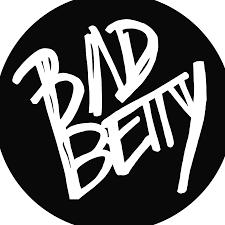

If you’ve taken a stroll around Nottingham at any point of any day of any week, you may have spotted Rich Bell with his camera, capturing everyday moments and celebrating them as something more than that. We hear all about his work, motivations and YouTube channel - which brings his stunning photography to screens across the county…

Tell us a bit about yourself and what you do…
I’m a street photographer from the North East of England, and I love to capture moments out on the street in and around Nottingham. For me, street photography is somewhat of a meditative experience. The world is alive with many wonderfully simple, spontaneous moments going on around us all the time. My work is about stopping and taking the time to celebrate and capture them. That is the really wonderful thing about photography - it allows you to almost pause time, and I think street photography is the perfect expression of that.
I’d say you’re pretty prolific - you’ve always got new work to show. How do you manage to stay active and motivated?
Thank you! it’s something I love and, honestly, it can be an addiction. I really like to create a lot and it's taken me a long time to find my voice in my work, but I think you can only find that by being out and taking photographs. But the thing that keeps me motivated is the people and wonderful streets here in Nottingham. I think what street photography has taught me is to see the world differently, and it's given me a new appreciation for what is going on around me. What once would have passed me by could be a wonderful image, and every time I go out, something new reveals itself.
You’ve got a YouTube channel. Tell us about that…
I’d been posting my work to Instagram for a few years, trying to post new images every day, but I often found that I'd be sharing images that fit the format rather than my favourite scenes, and that I had stories to tell beyond just a single image. So at the beginning of 2021, I decided I would start to make short films about street photography in Nottingham. I set up a YouTube channel called Life Work & Dreams, and it really breathed new life into my work and gave me a platform to talk about my work in a very different way. I work to create one film a month around a different subject matter or theme. I think YouTube is a wonderful platform to express yourself creatively and simply. I have started to grow a great community around my work there.
I know you’ve been in LeftLion before; I first heard about you from your interview with Tom Quigley last year. Back then, you were talking about your excellent photo book entitled Life, Work and Dreams. Your YouTube obviously shares the same title - remind me about that book and tell us a bit about its inspiration…
The book came about initially as a way for me to reflect on where I was as a street photographer and celebrate how far I’d come, and write the honest story of how I got into street photography but also act as almost a line in the sand for me internally, so that I could push myself further in the future and always reflect back on my work until that point.

When I was trying to come up with a name for the book, I wanted something that captured not only the spirit of the images I’d made, but also the daydreams and thoughts I’d have out on the street while making photographs, and Life Work & Dreams seemed to fit that perfectly. As my works evolved into the YouTube stuff, the name seemed to fit and became the brand for my work moving forward.
Can you give us a sneak peek into any upcoming projects, books or videos you’re working on?

I’ve been working on a year-long project entitled Tuesday. The concept started really simply with the idea to create a collection of images that were connected by the day of the week they were captured. These wouldn’t be confined to just street photography but moments of everyday life, with the hope of having 52 images at the end of the year.
It has evolved into something really special, charting everything from the street, being stuck at home with COVID, life in Nottingham, moving house, and the birth of my daughter. None of this I could have imagined when beginning the project back in January. I'm just in the process of selecting the final images with the hope of making a book and film later this year.

One of the East Midlands’ finest bands, Leicester lot easy life are about to embark on a grand arena tour, bringing them to their dream local venue - Nottingham’s Motorpoint Arena. We chat to lead singer Murray Matravers as they rehearse for that very show… ill it be the most nerve-wracking one of the tour for you? 100%. I'm always nervous playing in front of friends. So, yeah, we'll be petrified! And the hardcore Leicester fans, they're actually really annoyed that we're playing Nottingham and not Leicester, so there’s also that to deal with! ou're touring your most recent record, Maybe In Another Life, which is quite personal and vulnerable. How did the records come about? Did the pandemic influence the lyricism? easy life play at Nottingham’s Motorpoint Arena on 17 February
How are rehearsals going for the show as you adapt your production to the bigger venues?
It's going really well. It’s a bit daunting starting rehearsals; we have three weeks of them and today is day one, so we’ve got time and we’ve got the setlist down. It’s not like it used to be, and it’s scary doing anything for the first time, and we’ve just got a bigger PA. There’s lots more lights, a lot more people in the crew, and we’ve got a brass section now. We even have an arctic truck - which we never had when we played The Bodega! A lot has changed, but it's still pretty much the same show, just with lots more lights.
With yourselves being from Leicester, how does it feel to play like one of the East Midlands’ biggest venues? I'm sure that you probably grew up going to gigs at the Arena… I know, right? It's mental. I mean, we can't quite believe it. Sam, who actually lives in Clifton, sent us a photo the other day outside Motorpoint, and it had a big poster of us. It's literally what I think is the biggest venue we could play. And this will be local, obviously - so many friends and family will be there. It’s going to be a really special night for us.
Yeah, I think so. It's been such a crazy journey being in easy life that we took the time to reflect. I think the album, because of that, was a lot more introverted than our previous music. It was really important and cathartic, and a lovely experience to actually work out how we all feel. We were so busy, I never really got the chance to think about any of those things. I don't know what we're going to do with the third one. I don't know if that'll be even more introverted, and even more depressing. Maybe not. Who knows? You can only write what you feel.
It's quite a visual album, so how do you plan to translate the messages of the songs on tour and bring them to life? We have our lighting designer who is an absolute genius. He's actually been at the studio all day with loads of LED strips, sellotaping them to various bits of the set. I don't know what he's designing, but it looks complicated, and I think it's going to be fun. The set that we've built is based around being in your grandma's living room. Inside of the vinyl package of the second record, we had this wallpaper print, and this little mantelpiece motif, with little pictures of us hanging up. And we've taken that and built a house out of it. The set design is wicked, and it's all new for us.
We've never played big enough stages to warrant bringing in a set. So, it’s something new and it's really exciting. It's a bit of a stress, though; you can't just turn up with your amp and a microphone anymore! It's a totally different thing, but playing at bigger venues is actually easier, because you don’t have the bells and the whistles to hide behind at Rough Trade. If one of us makes a bum note then no one really cares, because at least the lights look good!
Are there any surprises fans can expect on tour whomaybe artists who guested on the album, like Kevin Abstract?

I don't think Kevin Abstract is going to be coming. He's a very busy man. I begged him, but he's got cooler people to hang out with. But I don't think people would have seen an easy life show like this before. It feels a little more accomplished than what we've done before. Usually, we just all jump around in our boxers and run around the stage.
There'll still be that energy, but I think with it being a slightly bigger show, there will be things you'll be seeing for the first time even if you've been to a bunch of easy life shows. I think this will be the best one. I'm also going to try to jump off really high things. The last tour, I was climbing on balconies and jumping off them, and that was really terrifying. But it was a lot of fun. So I'm going to try and do more of that. And I'm trying to break the world record for the highest stage dive.
What do you think is next for easy life?
To be honest, Motorpoint was a dream venue for us - that's obviously the local big arena. There's also Ally Pally that we're playing on this tour. After that, I don't really know. We obviously want to do a lot of festivals in the summer. And we're going to America in April, which will be fun. But in terms of the UK, I really don't know. I suppose we'll just keep playing the Motorpoint Arena until we're grey and old!
He’s played at the Theatre Royal. He’s played at the Albert Hall. And, in a fitting tribute to his local roots, he’s played at Clipstone Headstocks. It’s safe to say local pianist and composer Chris Miggells is having a career that very few can match. We hear all about the Mansfield man’s special hometown concert, his upcoming album, Synesthese, and more…
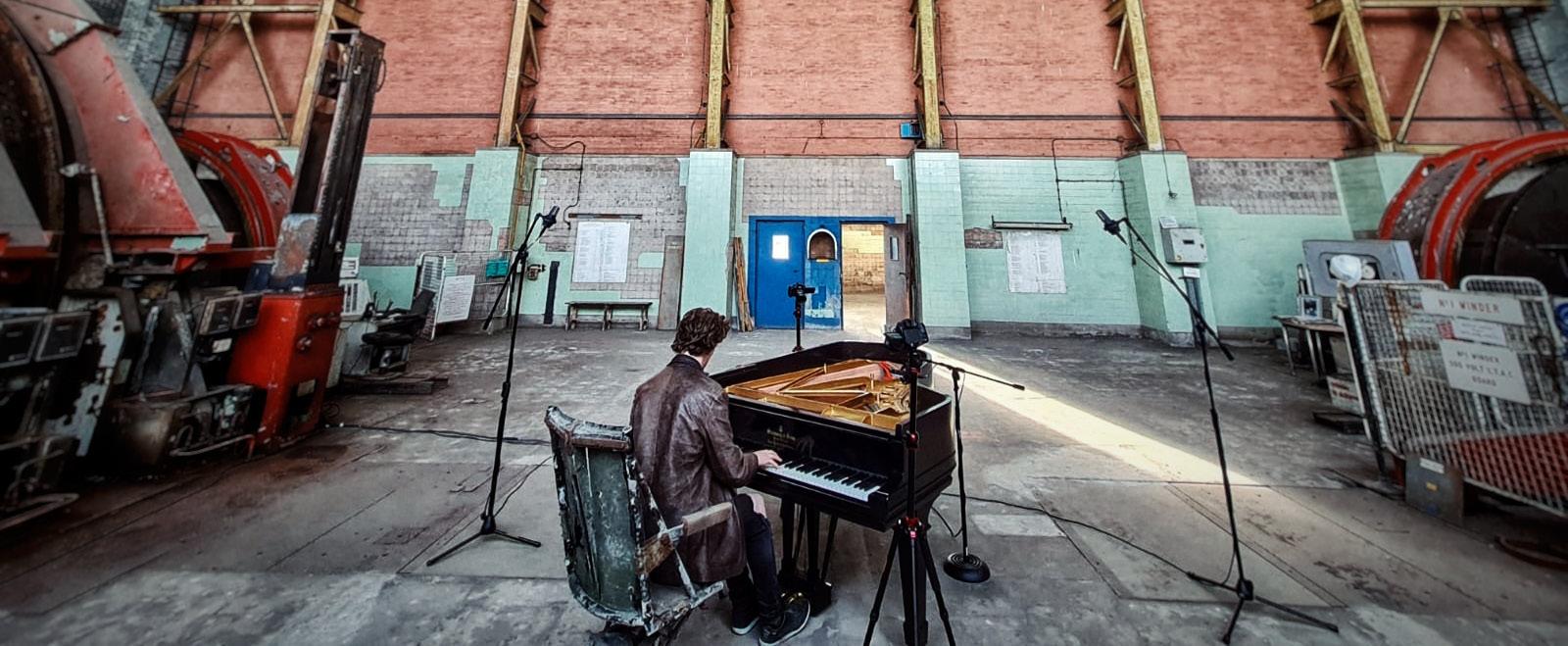

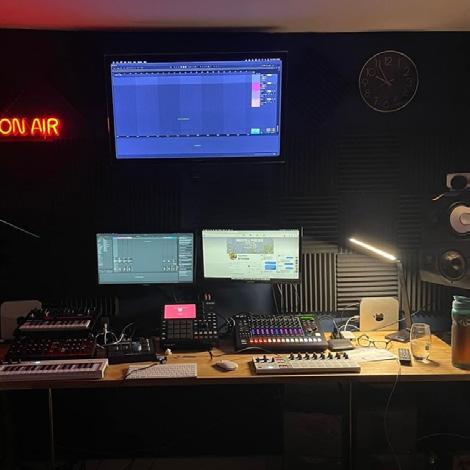
Tell us about how you started out as a pianist?
I got piano lessons at the age of twelve - it was my parents’ idea to keep me out of trouble! I fell in love with the instrument, especially when my uncle lent me a Casio keyboard. It enabled me to lose myself in my own little world making music.
Later my neighbours gave me a spare upright piano. With that my passion just grew and grew. When I was fifteen, I got work experience in a recording studio, giving me the chance to play on their grand piano and work with bands. This really encouraged me to keep playing and develop it into a career.
I was listening to Stone Giant travelling through the natural beauty of Sherwood Forest. In this setting it sounded particularly cinematic. What inspired this new work?
The Grand Canyon. That was the first time I’ve been that far away, and seeing an extreme example of the wonders of nature really shook me up, I was awestruck. When I looked at it, I just heard a soundtrack that went along with it.
You’ve made a film for Stone Giant. Is that the first time you’ve explored that creative field?
Yes, this is my debut film. I’ve recorded performances before, but this was the first time I really found inspiration for a film. We recorded at Clipstone Headstocks, which is a real landmark in Nottinghamshire. The 200-feet-high headstocks, the tallest in Europe, they’re a real piece of history. My grandfather worked and broke his back in the mines. It’s been a real part of me, growing up in the Ollerton, Clipstone area and the mining community there.
The headstocks were going to be pulled down, but Stuart Mills thankfully helped save it. Stuart’s been putting on events like music festivals in the headstocks and he kindly showed me around. The Power House room is like a cathedral of iron, I was instantly inspired. The look of the room is incredible, with all the machines and the history, and the sound in there is unreal. I had a vision of bringing a piano into the space.
All excited, I came back into work at Sherwood Phoenix and I’m like, ‘Hey guys, I’ve been to an abandoned coal mine, and we’ve got to put a piano in there as it sounds insane!’ The team were so supportive and got on board. We fixed this massive iron crane onsite to pull the piano up through the floor to get it into the space.
We took the lid off the piano, so the sound was going straight up into this cavernous area. Stone Giant has got a lot of space in-between the chords and the room developed its own tempo. Hitting each chord, letting that circulate and coming back to the piano - the vibe was right, and we recorded the piece in one take!
So where can people see the Stone Giant film? It’ll be up on my YouTube channel soon. But one of the big things from recording of the film was that Stuart, the owner of the headstocks, has invited me to reprise this as a concert in the Power House. That’s never really been done before, a pianist taking a grand piano to an abandoned coalmine and bringing people into experience it.
Clipstone Headstocks’ Power House room is like a cathedral of iron, I was instantly inspired. The look of the room is incredible, and the sound in there is unreal
Tell us about your debut album… Synesthese is a word I made from the term synesthesia. This is the neurological condition for experiencing one of your senses through another. It feels like a sort of crossing of the senses, if you can imagine seeing colours or shapes when you hear sound, or maybe you’re watching something extraordinary and hearing an internal sound which moves along with it.
This is the most fitting description I could find to characterise what I feel has been influencing my music. When I have a vivid experience, I’ll internally hear a soundtrack in my mind to accompany it, evolving with every moment. Being able to express this with my piano led me to create the album.
Watch the Stone Giant film and find out more about Chris Miggells on his website and YouTube channel, and look out for the forthcoming concert date at Clipstone Headstocks
@boredmarsh
@expressofficeportico
@djchris_sims

Bram Bancroft
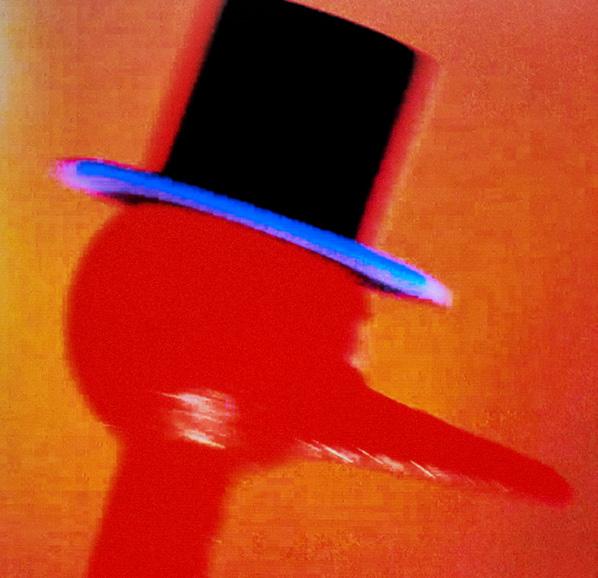
Lordly Ones (Single)
Falling into the genre of slowcore, Bram Bancroft’s new single Lordly Ones is a vibe-heavy existential track that feels more akin to a trip than listening to a regular song. Focusing mainly on the instrumental, the listener is taken to a psychedelic place full of sadness and occasional joy. Scattered with mellow vocals that muse on the meaning of life, the song is expansive and subtle. Perfect for lovers of Air or Salvia Plath, you can listen to this single from Tuesday 21 February. Lizzy O’Riordan
Distant Blue
Cheshire Smile (Single)

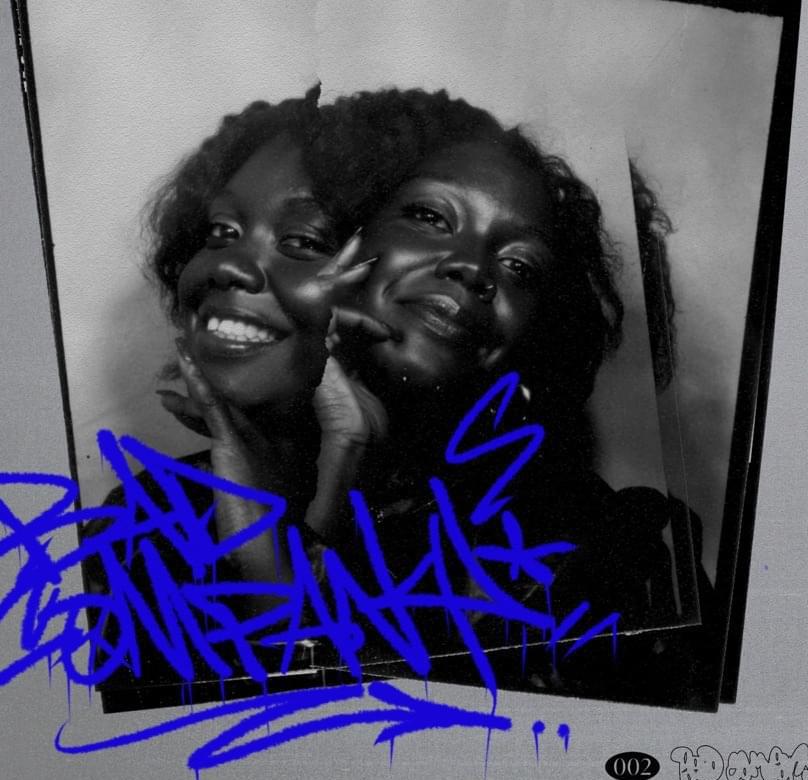
Nottingham-based alternative rockers Distant Blue released their latest single, Cheshire Smile, in January. It is a hard hitting and riotous song; think of early Arctic Monkeys on steroids and you're getting somewhere near their sound. Hard bass lines and harder drum beats are perfectly partnered with the heavy guitar riffs and vocals that drift in and out of extreme screams. If you like your music hard and heavy then this is definitely for you. Bassey
Katie Keddie
Help Me See (Single)
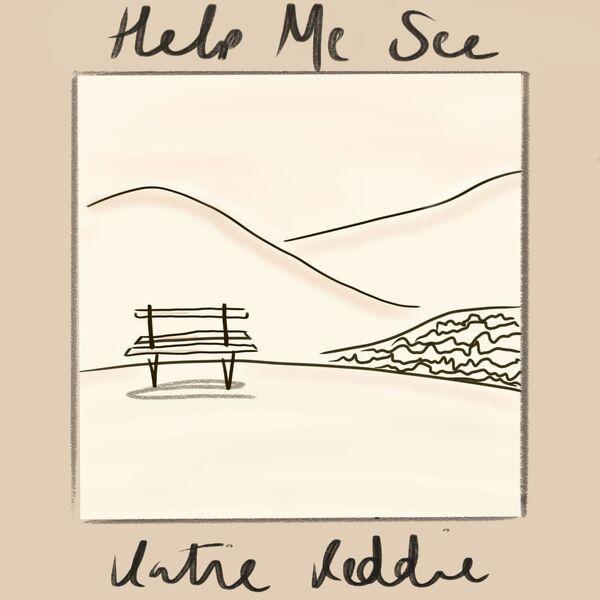
Us Notts lot truly have it all. Top rock artists. Top rap artists. And, in Katie Keddie, a top acoustic artist. The PhD student has established herself as a real multi-hyphenate, showcasing her impressive musical - as well as academic - ability during January’s BBC Introducing gig at the Metronome. Her latest single, Help Me See, is a mesmerising one, layering warm vocals on top of a properly relaxing tune. If you’re wanting a calming song to soundtrack your studies, this is it. George White
The Dream at the End of the World Radio Silence (Album)

Simon Waldram and Clarke Blacker have teamed up again to create their second album of ambient noise and psychedelic space rock; six tracks of experimental layered sounds that demand your attention. I described their first album’s sound as “as vast as the universe” but this release has taken it to a new level, from the mighty beats in the track Thru a Red Filter through to total immersion for over seventeen minutes in Radio Silence. To go bigger than the universe we need another dimension - and Radio Silence might be the answer!
Bassey
Yazmin Lacey Bad Company (Single)
The smooth, soulful R&B and jazz-infused tones of Yazmin Lacey’s latest single Bad Company are the perfect Sunday soundtrack - but if you want to listen to it on any other day of the week, I promise I won’t judge you. The bad company that Yazmin sings about is her inner demon, as the lyrics see her go on a journey of making peace with every part of herself: the good, the bad, and the ugly. This song is definitely not either of the latter. Gemma Cockrell
Over the past few months, the small gallery space at Broadway Cinema has been presenting a series of art exhibitions under the new art project OTOKA. We talked to its Artistic Director Candice Jacobs about her ideas and plans for the future…
What is your background in the arts?
I co-founded the art studios One Thoresby Street and for around twenty years, I have used contemporary art as a way to put on some of the best parties and amazing art exhibitions in Nottingham - which I believe have helped to set the tone, construct the communities, build the careers and establish the energy around the art and the artists that continue to exist here today.
I’ve always been inspired by artist-led DIY attitudes towards art and try to bring that essence into everything I do. I currently work as a lecturer teaching at Central Saint Martins and Chelsea College of Art.
What is OTOKA and why did you set it up? OTOKA is the Slavic word for island, and like an island it is solid in its grounding which is built up from years of sediment (experiences and memories) that each contribute to what now exists both beneath and within its surface. Like an island, its mass is surrounded by liquid, a liquid form of modernity - a metaphor written by Zygmunt Bauman that describes the condition of constant mobility and change that he sees in relationships, identities, and global economics within contemporary society. As an island, OTOKA can provide all that I need in order to become a self-sufficient body, I just need to know what to look for and how to use it.
When I came back to Nottingham from London last year because of COVID, I also became a mother and started to see the city that I used to live in with fresh eyes. The city centre was empty, so much of what used to exist was no longer there. But, as sad as this was, because of what I had done in the city before, I saw this as an opportunity - what if I could take on these empty spaces and move from one to another, island hopping, where, instead of worrying about losing space (which happened with One Thoresby Street), I could respond to each space differently and broadcast directly into people's homes through OTOKA’s website, which would also act as an artwork. So, much like the internet, I wouldn’t need to be fixed in a location, I could always be transient, fluid and nomadic, following people around in their pockets, occasionally manifesting into physical space as and when they became available.
What are your plans for OTOKA going forward?
Throughout February and March I will use OTOKA and its takeover of Broadway Gallery as an open studio and workshop space that morphs into a public gallery that stays static for a moment of realisation as final experience; where the audience clamber through a crystalline structure shining with hints of neon into glistening pools of screens that move around to track and trace the bodies and words that flow through dying exotic waters.
Tell us about the exhibitions that have been on display at Broadway Gallery…
Over a four-week period across November to December, I used OTOKA to host four exhibitions in the Broadway Gallery built around the broad theme of the intrinsic and unequal relations between data, technology and people, to provoke questions about our digital lives and futures, how sustainable or desirable they are and what alternative worlds we might want or need to create.
I worked with Framework for Practice, a partnership between Nottingham-based Will Harvey and Ryan Boultbee, to use scaffolding as a display strategy that could minimise the environmental impact of our activities.

I’m hoping to work with a collective of art organisations around the city called Art NEST who are addressing their carbon footprint, and with the Green Hustle and the Green Light in the City partnership, to gather their financial paper waste. I also want to work with individuals - new mothers and people who identify as mothers or who are in the position of care, and their children, through a series of workshops led in collaboration with musicians, the creator of the Femme Fatale Gals zine and Nottingham’s youngest board member of UNESCO City of Literature, Khaya Job, during February half-term. Through this, we will build a giant paper mache crystal sculpture together and chat about how fluidity, liquidity and stability are connected to the economy, climate and the internet to ask what effect this is having on our wellbeing and sense of self. Our conversations will be transformed into a series of neon text works and a poetic form of text that sits within VR films embedded within the sculptural installation.
The exhibitions brought artworks from 2018 Turner Prize-nominated artists Forensic Architecture, Tara Kelton from India, Ben Grosser from America and Yuri Pattison together in the city, with additional online artists' works from Nottingham-based Joey Holder, Lumen Art Prize winner Libby Heaney, and artist and author of New Dark Age, James Bridle. The art is supplemented by podcast interviews and a PDF Reader featuring essays by leading academics in the field of digital privacy.
That sounds really exciting. How might people get involved with the project?
You can get involved in the workshops that we’ll be doing at Broadway Gallery during February half-term by emailing OTOKA or by booking online through Broadway’s website. Alternatively, you can follow @ otokapresents on Instagram.
My solo show All that is fluid melts into air, featuring the collectively-made paper mache crystal, will open in March.
Long-time LeftLion collaborator Andy The
chats us through his cinematic cover…
What was the inspiration behind the cover?
I knew that the topic should be film-orientated. Usually, everything I draw is set within a fantasy world and doesn't really show much technology similar to what we have in the "real world", so I thought it would be cool to introduce that element as it's something I haven’t done before. I really liked the idea of a wizard being interviewed by a small camera crew out in the mountains.
This is my third cover for LeftLion and it's always a pleasure working on these - so if you have grabbed a copy, that's amazing
What was the biggest challenge that you faced in creating the piece?
Blending in a topic I wouldn't usually consider. I don't really draw a great deal of machinery or technology, so it took some work to find a design language for the camera crew and their equipment that would fit within my fantasy-style worlds.

What other projects are you working on at the moment?
I have a few that I'm desperately trying to make progress on, but it's always a matter of finding the time! They’re most notably my trading card game and a book based on the world I am creating. I have also started to learn animation more seriously. It seems like Netflix just won't get back to me on making a series - so I'll have to start work on it myself, or at least create some small clips!
What are some of your favourite films?
My all time favourite film is the original Alien, without a doubt. I'm a huge huge sci-fi fan and I don't actually watch many fantasy films. But I guess my style is heavily inspired by Studio Ghibli, which I love - Princess Mononoke and Spirited Away being my favourites.
Is there anything else you’d like to tell the LeftLion readers?
I really hope you like the cover I created for the legendary LeftLion magazine! I think it's my third cover for them and it's always a pleasure working on these - so if you have grabbed a copy, that's amazing. Hopefully I can do more in the future!
@andy_the_illustrator
As an artist who flew all the way from Romania to follow his passion in art and animation at Nottingham Trent University, and who now makes his living at a print shop, Radu Secareanu sees his unique designs printed on hoodies, mugs and coasters every day.
Ever since he was a child, Radu was encouraged by his parents to be creative. He spent his time drawing and practising and quickly realised that creativity was the path for him. “Going into arts was a no-brainer, it was what I loved and what I dreamed of doing,” says the 23-year-old. “Art always found its way into my life, and I followed it wherever it took me.”
You can do so much with just a pencil and a sheet of paper. What amazes me the most is the infinite possibilities they offer.
But where does Radu find inspiration for his art? The answer is a simple one. “Everything beautiful around me,” he smiles. “I am an observer. I enjoy looking at the finer details in objects and surroundings. I think people are always in a rush and ignore the little things, like the sculpted handrails at the train station you go to every morning, or the intricate wood grain on the vintage table at your local cafe. Those are the things that make life whole and once you start noticing them, you will appreciate them so much more.”
For Radu, both illustration and animation are effective storytelling tools, and he uses both to explore the themes that excite him. “You can do so much with just a pencil and a sheet of paper. I think what amazes me the most is the infinite possibilities they offer. You could give the same story to 100 people, and you will receive 100 different visual interpretations of it.” raduanimations.weebly.com
He studied animation, both 2D and 3D, at university, but focused mostly on 2D animation and character design. At his current job, he uses all his illustration skills and even has an illustration book published by an independent author, and created a booklet for a children's educational programme. The talented multi-hyphenate’s proudest artwork is an animated street film that he created for his final year project. It consists of an autumn shot of a row of houses during the golden hour, including small puffs of smoke rising from the chimneys as an old car slowly passes the empty street. It is, as he admits himself, detailed, colourful and diverse.

As a free-spirited creator, Radu is lifted by challenges, thriving in dynamic and unpredictable environments. “The subjects I work on are so different from one another that I sometimes have to explain myself twice to strangers,” he laughs, adding that he wishes to become a freelance artist one day, with no strings attached to anything apart from his passions and art, being challenged on a daily basis with interesting stories. With his impressive skill set, undeniable drive and striking style, we have to say it’s a dream that will likely come true.

To Visit Patois Banton
Patois Banton is a new exhibition by artist, writer, and curator Cedar Lewisohn, and is on show until Saturday 11 March at the Bonington Gallery. Stop by to see a ton of great stuff. boningtongallery.co.uk


To Do Krapp’s Last Tape
This Krapp certainly doesn’t stink. In fact, Krapp’s Last Tape is a properly poignant show delivered by Nottingham legend Kenneth Alan Taylor. A must see, we’d say.

Weds 15 – Sat 18 February, Djanogly Theatre
To Follow Payta Easton
Spoiler alert: Payta is putting together our cover for issue 157, and it’s going to be top notch. How do we know? Because all of Payta’s art is top notch. Drop her a follow and we’re sure you’ll agree.
@payta_









